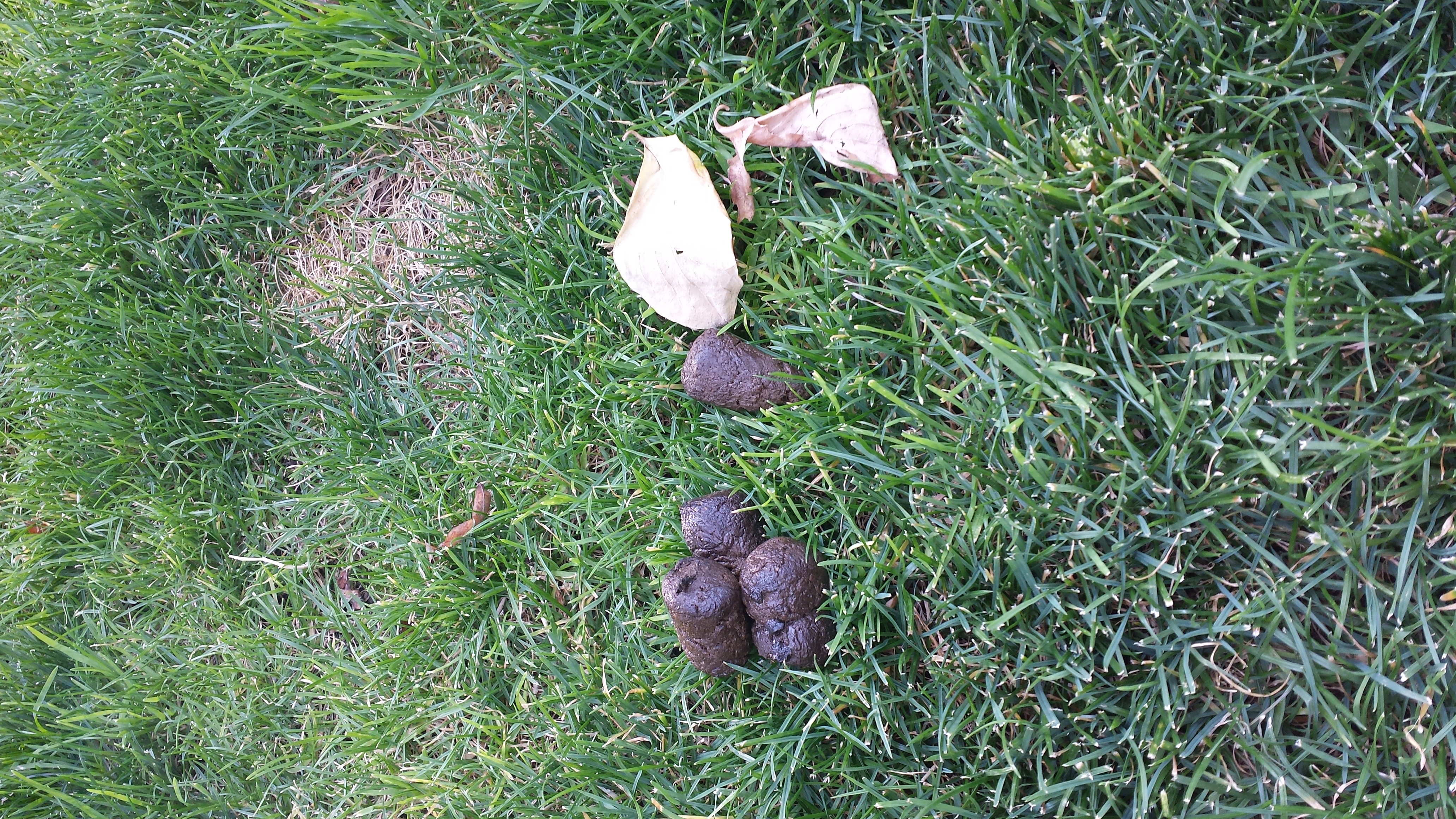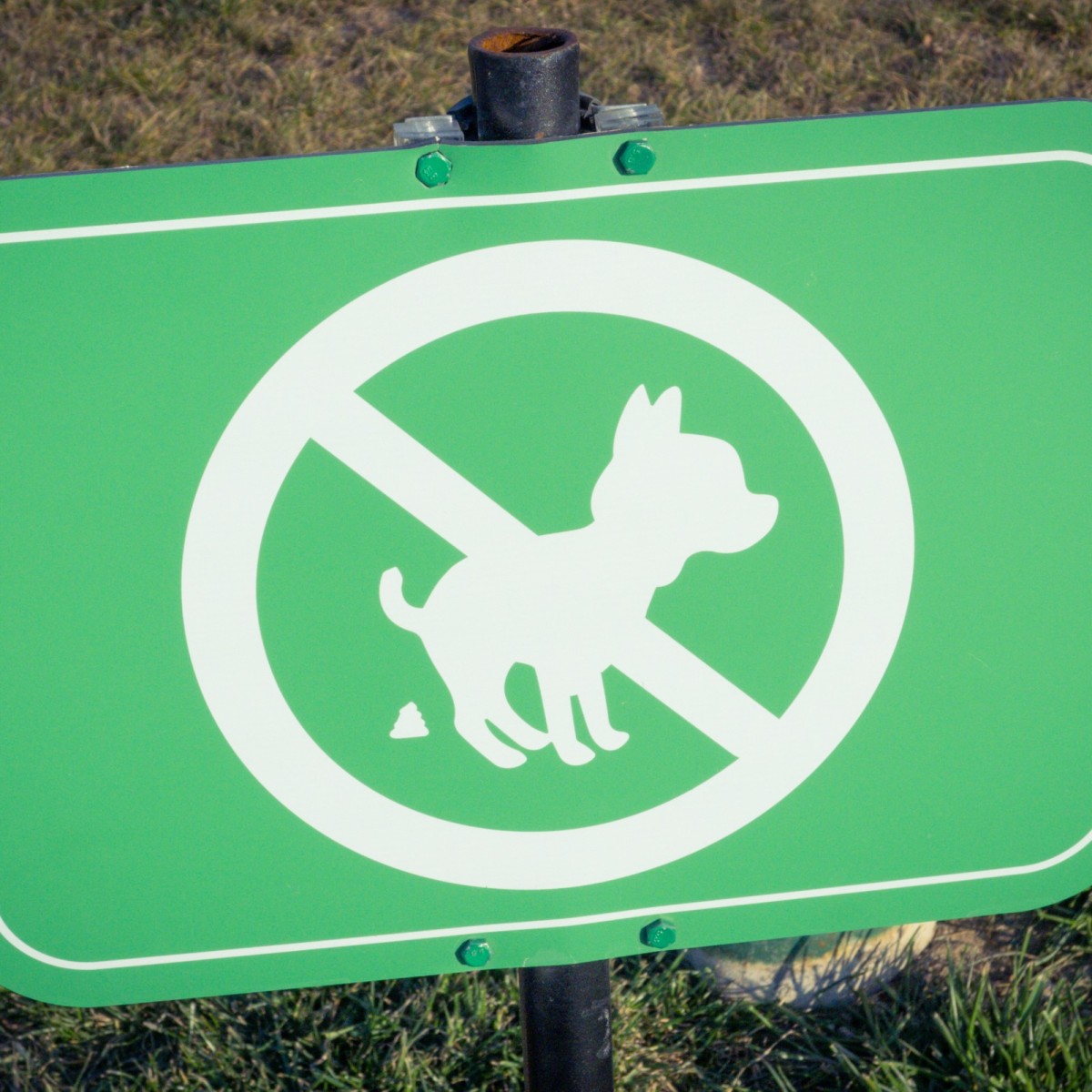Neighbor's Dog Craps On My Lawn
- Neighbors Dog Craps On My Lawn Mowers
- Neighbors Dog Craps On My Lawn Sweeper
- Neighbor Dog Pooping On My Lawn
When your neighborhood dogs choose your lawn as the perfect place to do their business while relieving their bodies of unwanted substances, it won’t take long before spots develop to remind you of their visit. Even worse, the scent of a dog’s urine will attract other dogs who will also finish their business on the same spots, leaving your lawn affected by unsightly pee spots that might be difficult to control.
I went to the town a few weeks ago, after 8 years of politely asking my neighbor to pick up after his dog who poops on our lawn while running around leash-less on a daily basis. I wrote him anonymous letters, wrote him signed letters, and asked him face to face a number of times to not let his dog out unleashed, and to always pick up after his dog. My next door neighbor was letting his dog poop around my mailbox, which is next to the road. One day when I saw the neighbor working in his front lawn I greeted him like a good neighbor. I told him I was having a problem with dogs pooping around my mailbox and I was puzzled as to what to do to stop it.
It even hurts more when you don’t own a dog, and your neighbor’s dog finds your yard quite useful in getting rid of the disgusting fluid. At such a point, you will feel disappointed, and you might wonder what to do, but thankfully some solutions will help you nip the issue in the bud:
1. Be neighborly
What to do when a neighbors dog craps on your lawn - Duration: 0:32. Bridgethaha 10,251 views. How I dealt with my neighbor's dog poop being on my lawn - Duration: 3:58.
At times, all you need to do is hold a friendly conversation with your neighbor about their dog’s behavior and how it affects you. Try to do so in a polite way, so that it won’t spark any disagreements that may worsen the already aggravated situation. A good neighbor will take some action and begin to monitor their dog closely to avoid upsetting you.
In some cases, you can suggest that your lawn is dangerous for dogs since you have chemically treated it to deter skunks or raccoons. The only problem with lying is that it might compromise your chances of appealing to authorities if the case becomes quite complicated.
2. Confront your neighbor
At times, you have enough evidence that your neighbor’s dog is the one that pees on your lawn, and in such a case, you should be bold enough to confront your neighbor. Don’t be aggressive, however, as you are trying to solve the issue, not complicate it. The best way to do so would be to invite them over for a drink or dinner, maybe, and try to assume that they don’t know anything about the issue and that you are only inviting them to inform them.
If you reach an agreement, drop the subject and discuss something more interesting, to let them know that you’re still in good terms. If, however, they are rude and won’t listen or cooperate, you can draft a formal complaint and keep a copy for yourself, trying to prove that you attempted to resolve the issue. You might want to install a security camera that will capture the dog messing with your lawn so that your neighbor won’t have any grounds to deny it.
3. Reduce attraction
Dogs can’t forget where their “pee-mails” are supposed to be and will always go back to the same spot to relieve themselves, and as such, you have to do a little cleanup to reduce the enticing smells. Clear out all piles of feces and be sure to douse the whole lawn with a hose, to dilute and wash the urine into the ground. Afterward, sprinkle some lime over the grass to reduce any smells that may have remained.

The best thing about lime is that it will not harm your grass in any way, and will even help in neutralizing nitrogen which causes some burned spots on the lawn.
4. Motion activated sprinkler
This might not be the politest way to do it, but remember that you have to do what you can, and installing a motion-activated sprinkler is one of the most effective actions you can take to keep away the pooch threatening your lawn’s glamour of your lawn. You can install the sprinklers along the boundary of your yard, or at specific spots where the animal visits to do their business.
Neighbors Dog Craps On My Lawn Mowers
When the dog gets to the spot, its motion will trigger the sprinkler sensors, effecting a quick spray of water. Such a spray should be enough to startle the dog and send it scurrying away. Just remember to deactivate the sensors when you want to get onto the lawn, to avoid getting sprayed as well.

5. Mark the boundaries
Marking your lawn boundaries with a fence is more than likely to keep away dogs looking for an excellent spot to do their business. You want to invest in sturdy fencing such as chain-link, that will let you enjoy your lawn while keeping of neighborhood animals. Always keep the fence gate closed, and regularly inspect for holes that may have been dug by stubborn canines.
In case you are interested in permanent fencing, get a low-voltage electric dog fence that will deliver a low shock to animals that might want to get into the lawn despite the installed barrier.
Neighbors Dog Craps On My Lawn Sweeper
6. Use a repellent
Cayenne pepper is also a good solution if you liberally sprinkle it along the edges of your lawn or on the pooch’s favorite urination spot. Cayenne is a hot and bitter substance that works perfectly as one of the most effective home remedies. Even as you use it, remember to reapply it regularly or as often as has been directed. You can also use vinegar since dogs hate the smell, in addition to being highly sensitive to it.
Ammonia and citronella oil will also work fine when it comes to keeping Fido off your lawn, so be sure to get a repellent that works well for your yard. Repeated treatment will make the dog remember the vague smell, and he will avoid going back there at all costs.
7. Install an ultrasonic repellent
You can also install ultrasonic repellents, which are also motion-activated. Mount the device on a tree, shed, or fence, and as the dog approaches, its motion will trigger the sensors causing emission of sonic and ultrasonic waves, bothering the dog as a result. It’s, however, unclear how well these repellents work, so you might want to consider them as the last option, till more evidence comes up supporting their efficacy.


Related article: Tips for Pet Proofing Your Home
Neighbor dogs peeing on your lawn appear evil, and the effects of the pee are even worse, which is why you have to act quick before they are accustomed to peeing on your lush green lawn. The above-listed tips should be the perfect solutions, so be sure to consider the one that works well for you. Things like installing a fence should be the most effective as a long-term solution, especially when your neighbor’s Fido is stubborn. Just be sure to use a solution that will not get you sued for cruelty against animals.
Related Articles
LEAVE A COMMENT
By Lizzie Post, Houzz
Neighbor Dog Pooping On My Lawn
Dear Lizzie,
How do you stop neighbors from letting their dogs pee on young landscape plants near the edge of your yard?
What’s a homeowner to do?! Dog’s gotta pee, plants gotta grow, and you can’t sit on your stoop monitoring your yard all day long. If this is happening while dog owners are out walking their dogs, it’s perfectly OK to speak up about the issue. But rather than tell someone what not to do, it’s always best to try to frame something as a positive suggestion.
Related: Keep an Eye on Your Lawn From a Comfortable Porch Swing
“Robert, if you don’t mind trying to get Luna to pee on the other side of the sidewalk, that would be great.” Or, “Sarah, it would be great if you could encourage Coco to use this part of the yard instead of the rose bushes.” When given in a friendly, light tone, gentle suggestions like these should cause little argument. (Although after our last neighbor-related post, I’m guessing that a few of you encounter eye rolls and gripes no matter how nice you are about it.)
Deb Welch, original photo on Houzz
As we said before, you can’t be there to monitor this all the time, so if you need to put up a “helpful reminder” sign, that could be OK. It’s really up to you and how you feel about the image it portrays. Just as with speaking to someone face to face, you’ll want to be careful and kind with your language. “Please no peeing on the shrubs.” “Water, yes. Pee, no.” “We thank your dog for not peeing on our garden.”
Related: How to Help Your Dog Be a Nice Neighbor

Harder to manage is the neighbor’s dog whose activity at the edge of his property still gets on yours. It’s hard to ask people to change their behavior, and even harder to get a dog to change its behavior, especially if the dog is able to be in the yard unattended. In this scenario, it’s best to do what you can to control the problem from your end. Can you rearrange what’s planted in this particular spot? Can you do anything with fencing or to create a barrier so that a lifted leg doesn’t result in dead plants? Or, perhaps, meet your neighbor — with some dog treats in hand — and clue him in. “Fred, Louie is an awesome dog, but I’m not sure if you’re aware that he’s peeing on our rose bushes. Any chance you can try to find him a new favorite spot?”